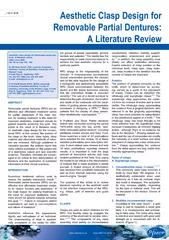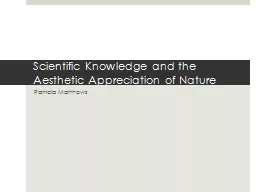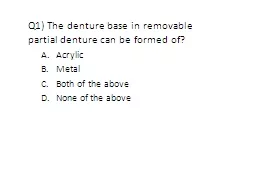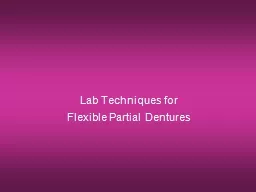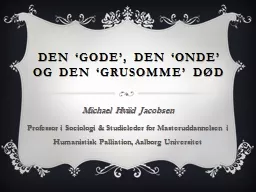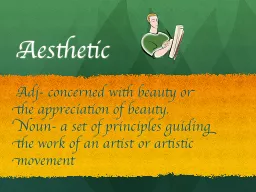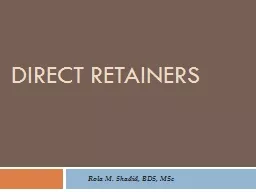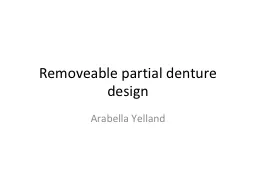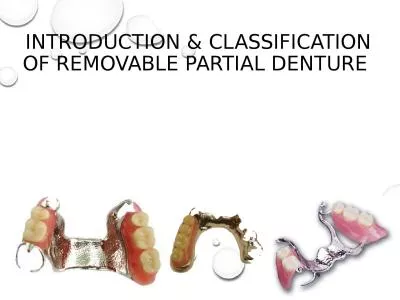PDF-Aesthetic clasp design for Removable partial den tures
Author : test | Published Date : 2015-05-15
60 no 5 pp 190 194 Dr SB Khan BChD PDD Lecturer Prosthetic Dentistry Faculty of Dentistry University of the Western Cape Private Bag XI Tygerberg 7505 Tel 021 937
Presentation Embed Code
Download Presentation
Download Presentation The PPT/PDF document "Aesthetic clasp design for Removable par..." is the property of its rightful owner. Permission is granted to download and print the materials on this website for personal, non-commercial use only, and to display it on your personal computer provided you do not modify the materials and that you retain all copyright notices contained in the materials. By downloading content from our website, you accept the terms of this agreement.
Aesthetic clasp design for Removable partial den tures: Transcript
Download Rules Of Document
"Aesthetic clasp design for Removable partial den tures"The content belongs to its owner. You may download and print it for personal use, without modification, and keep all copyright notices. By downloading, you agree to these terms.
Related Documents

